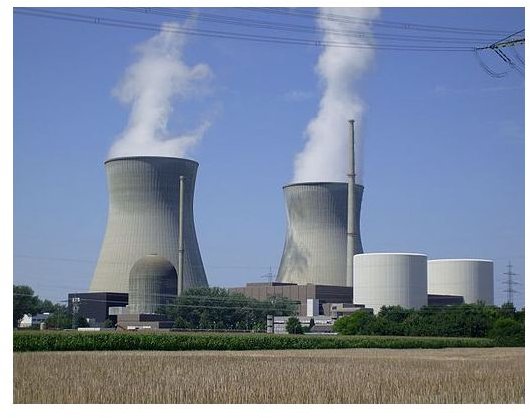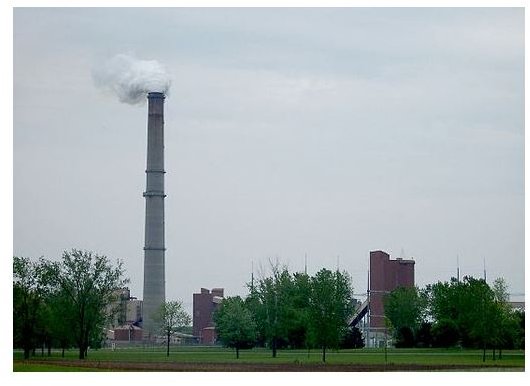Save Five Non-Renewable Energy Resources from Depletion and the Earth from Pollution
Our Dependence on Non-Renewable Energy Resources
Did you know more than 85-percent of the energy used by us comes from non-renewable energy resources? We depend on non-renewable energy resources for just about everything we do, including cooking, heating, transporting, lighting, and manufacturing. It is clear from their very name that these resources are extremely precious and cannot be renewed or regenerated easily, and their depletion will certainly bring many human industries to an end.
The industrial revolution got a fillip because of these non-renewable energy resources. This reckless use of these non-renewable energy resources has also contributed to global warming and pollution. Formed from fossil fuels of plants and animals, these energy resources require millions of years to be formed. (And I am sure we will not live up to millions of years waiting for the re-formation of these invaluable energy resources).
There is no doubt we depend on these energy resources for everything, but their fast depletion is a dangerous sign for our future. We must utilize these precious and scarce natural resources and not exploit them unremittingly and irresponsibly in our spree for relentless development so that our future generations can also avail their benefits.
Five Non-Renewable Energy Resources- Advantages and Disadvantages
Minerals fall under the category of non-renewable energy resources, whose extraction and mining cost both in terms of time and money.
1. Coal
**
Coal is the most abundant non-renewable resource in the world, though its reckless exploitation is contributing to its fast depletion. Coal was formed from the buried remains of plants and animals over a period of millions of years. Coal contributes significantly to the energy consumption in the world. We are dependent on coal for electricity production, heating and cooking, and transportation. The industrial sector is heavily dependent on coal for its survival. Less developed countries are dependent on coal for most of their energy needs. If the consumption continues at this pace, without increasing, the coal reserves will last only 200 years. Moreover, coal is responsible for creating environment problems in the form of atmospheric pollution. Its mining contributes significantly to erosion and habitat destruction. The present global consumption of coal is about five billion metric tons on a yearly basis.
Related: Theories of Coal Formation
2. Oil
Another precious non-renewable energy resource is crude oil or liquid petroleum. Oil mining is a time-taking and costly process. Oil is used as a major source of energy. Most of the vehicles throughout the world run on petroleum. It is used as a base material for plastics. The asphalt used for roads is derived from oil, and oil is a source of industrial chemicals. The reckless exploitation of oil reserves exceeds the rate of its discovery, and the time isn’t far off when the oil supplies would be exhausted. (At the present consumption rate, oil reserves may be exhausted in another thirty years.) Moreover, the burning of oil contributes significantly to environment problems and atmospheric pollution in the form of carbon dioxide, carbon monoxide, sulfur dioxide, and nitrogen oxide. These greenhouse gases pollute the air and contribute to global warming.
3. Natural Gas
Natural gas is also found in the same places as oil. In fact, it is the residue of oil. Basically a mixture of methane, propane, ethane, and butane, natural gas is a clean energy fuel and does not contain sulfur. When it contains methane and ethane alone, it is called LPG. Comparatively cheaper and cleaner than other non-renewable energy resources, natural gas is environmentally friendly and easy to transport, though construction of gas pipelines is a time-taking and costly affair. At present, the natural gas reserves stand at about 100 million metric tons. We can depend on these reserves for the next 100 years.
Related: What Gases are Burned in a Flare Stack Fire?
4. Nuclear Power

Nuclear power is also a non-renewable resource. All the functioning and commercially viable nuclear reactors use uranium as the raw material. Uranium, as a mineral, is not abundantly available and is limited to a few areas in the world. The heat produced during fission of uranium atoms produces steam for generating electricity. Though nuclear power is a clean and cheap source of energy, the construction of nuclear reactors is significantly high. Moreover, nuclear waste is a serious health hazard and nuclear leakage can pose serious health problems. Also, proliferation concerns and radiation problems effectively invite sanctions and public opinion against nuclear power stations.
Related: Countries that use Nuclear Energy
5. Timber
Wood or timber is one of the oldest forms of energy resources. A few of us think that wood is a renewable energy resource, as we can plant as many trees as we want. However, in many parts of the world trees are fast depleting in number. More trees are being cut down for wood or lumber, or land clearance for agriculture, than are being replanted. The growing world population has also ensured that the available space for growing trees is rapidly diminishing. Forests are being destroyed to make way for shopping malls, factories, and corporate houses.
Moreover, there are several species of trees that do not grow quickly, and their regeneration takes much longer. For example, several species in the rain forests do not grow to maturity during an individual’s lifespan. Wood is being depleted as a resource because of the reckless deforestation spree. Today, wood is being used not only to fuel economic development, but also in furnishing our homes, offices, and shopping complexes. Deforestation is significantly contributing to global warming and environment pollution. The recent changes in global temperatures and untimely rains point toward climate change.
Meticulous Use of Non-renewable Energy Sources Key to Sustainable Development
It is our responsibility to use scarce non-renewable energy resources judiciously so that we do not contribute to their fast depletion and thus save our planet from environmental pollution. It is very important that we follow sustainable use of non-renewable energy resources. The development of alternative energy sources and the technology to harness them at the nascent stage should be our aim. We are dependent on non-renewable energy resources for the next few decades and the health and growth of our economic system depends on that.
Overexploitation of these resources may lead to excessive pollution and rising global warming threat. Their judicious use can save us from an energy crisis in the immediate future and light our homes until we develop alternative sources. Also, we need to have proper technology in place and devise newer methods to eliminate the negative impact of fossil fuels. Let us save energy and move toward its sustainable use.
References
University of California - Non-renewable Energy Sources
Encyclopedia of Life Support Systems - Non-renewable Energy
US DOE - Non-renewable Basics
Images
Wikipedia Commons - Kintigh Generating Station (Coal power plant) Gundremmingen Nuclear Power Plant
